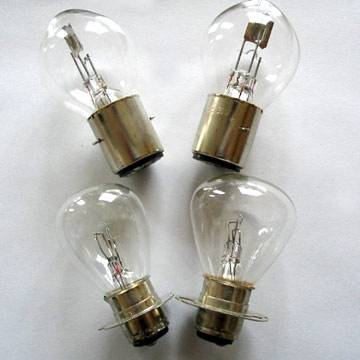
Ever since Karl Benz outfitted his Benz Patent Motorwagen with a gas lantern so he could drive at night, the race has been on to improve the performance of the automobile lighting system. In the 120 years since the headlamp was introduced, major strides have been made not only in forward illumination, but in rear and side lighting as well as in interior lights. The result is greater style and safety than ever before.
Early in the development of the automobile, the only lighting available were headlamps. Gas and oil lanterns soon gave way to incandescent electrical lights, which in turn lost favor to halogen bulbs, high-intensity discharge Xenon bulbs, and most recently, Light Emitting Diodes (LEDs). As people began to drive more during the hours of darkness, the need for tail lights became evident. Brake lights were added as a safety feature, as were turn signal lights, and eventually side marker lights and daytime running lights. Interior lights and dashboard lights were also originally developed as safety features.
Automobile lighting is still primarily a function of safety. The headlamps provide the driver of the vehicle the ability to see the road and any obstructions ahead of him, and to alert oncoming traffic to his presence. The rear and side lights alert drivers behind the vehicle to its presence. Turn signals and brake lights provide drivers both behind and in front of the vehicle with information regarding the speed, location, and intention of the vehicle's driver. Interior lighting allows the driver to see his operating gages in order to operate the vehicle safely.
Automobile lights, commonly referred to as the vehicle lighting system, consist of forward-mounted lights, rear-mounted lights, side-mounted lights and interior lights. The colors and functions of these lights have developed by convention over the years and have been codified in the United States in recent decades in the Federal Motor Vehicle Safety Standard 108. With some exceptions headlamps may only emit white light. Taillights may only emit red light. Side lights and turning signal lamps may only emit amber light. Emergency vehicles may use other colored lights such as blue.
The placement of the different kinds of lights on a vehicle indicate their purpose and features. Headlamps are positioned at the front of the vehicle and are designed to emit a powerful beam of light to illuminate the road ahead. They are frequently equipped with a dimmer switch which allows the driver to toggle between the brighter high beam and dimmer low beam. Turn signal lights are activated by the driver to alert other drivers of his intention to turn. Brake lights are activated automatically when the brake pedal is depressed to alert following traffic of a change in speed.
Early automobile lighting devices were large and cumbersome, and change has not always come quickly. The standard round, 7-inch headlamp, for instance, was mandated by the federal government for all U.S. vehicles from 1940 through 1975. Today, however, the miniaturization of components that has affected many industries is prevalent in the auto lighting field as well. Light Emitting Diodes have replaced bulbs in many applications, reducing the size of the output device to smaller than a pencil eraser.